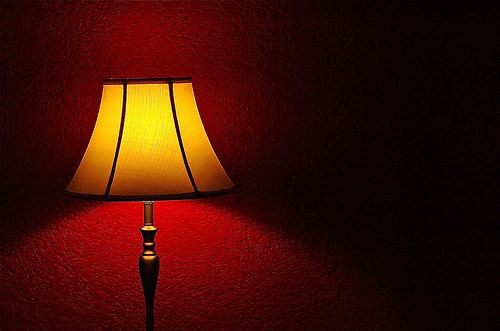Older Adults Suffer More Vision Problems At Home: Is Glaucoma Worsened By Dim Lighting?

For older people struggling to see at home, it is time to turn on the light. Dim lighting in the homestead worsens vision problems for elderly patients with glaucoma, according to a new report in JAMA Ophthalmology.
An estimated 4.2 million people over the age of 45 have glaucoma in the U.S. Triggered by incurable damage to the optic nerve, glaucoma symptoms range from peripheral vision loss to eye pain to blurred vision, depending on the disease category.
Physicians at the Washington University School of Medicine noticed that their patients often complained of worse vision at home relative to their visits to the clinic.
“Older adults are not seeing at their maximal visual potential in their homes,” said lead opthamologist Anjali Bhorade, of the Washington University School of Medicine.
To investigate, Bhorade and colleagues conducted at-home vision tests for 126 patients with glaucoma and 49 without glaucoma, and compared these results with identical exams done in hospitals. The vision test was the standard variety, in which people are asked to read lines of letters, with each descending line decreasing in font size.
Suspecting a possible link to dimness, the researchers also measured light levels in the patients’ homes and in the clinic.
Across the board, vision scores were better in the doctor’s office than at home. Two out of five patients with advanced glaucoma were able to read three or more additional lines in the clinic versus when in their homes. The improvements were observed for both near and far sight.
Poor at-home lighting was the biggest factor linked to this vision discrepancy. Nearly 85 percent of the patients’ homes had lighting levels below what is recommended by doctors.
Theories as to why patients’ homes are less bright range from simply not knowing about the importance of appropriate lighting to worries over the utility bills associated with owning additional lamps.
“While increased lighting levels will not worsen ocular diseases such as glaucoma, some older adults prefer dim lighting due to issues such as glare that may occur with increased lighting levels,” continued Dr. Bhorade. “Clinicians should inquire about how patients are functioning in their homes and educate patients, particularly those with advanced glaucoma, as to the importance of home-lighting.”
Light meters for measuring dimness are expensive, but Bhorade suggests that a customized in-home assessment by a trained occupational therapist or low-vision rehabilitation specialist can measure lighting levels and provide recommendations on how to improve in-home lighting.
Some simple tips include increasing wattage of light bulbs or switching to T8 fluorescent bulbs.
“The results from this study will alert clinicians to the importance of home lighting for older adults both with and without glaucoma,” Bhorade said. “Simple interventions such as increased lighting in the home can help maximize their vision and thus improve their function and quality of life.”
Source: Bhorade AM, Perlmutter MS, Wilson B, Kambarian J, Chang S, Pekmezci M, Gordon M. Differences in Vision Between Clinic and Home and the Effect of Lighting in Older Adults With and Without Glaucoma. JAMA Ophthalmology. 2013



























